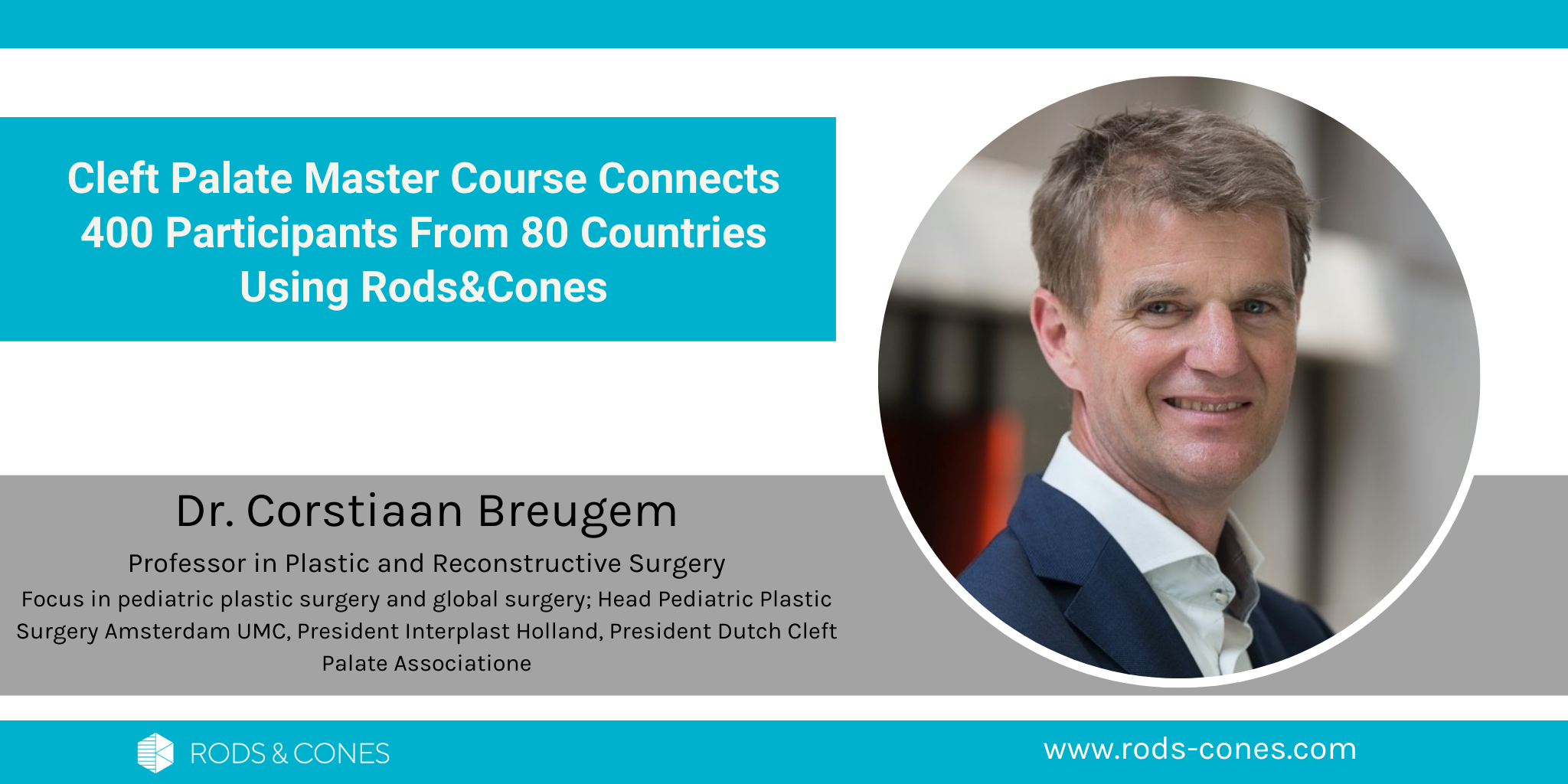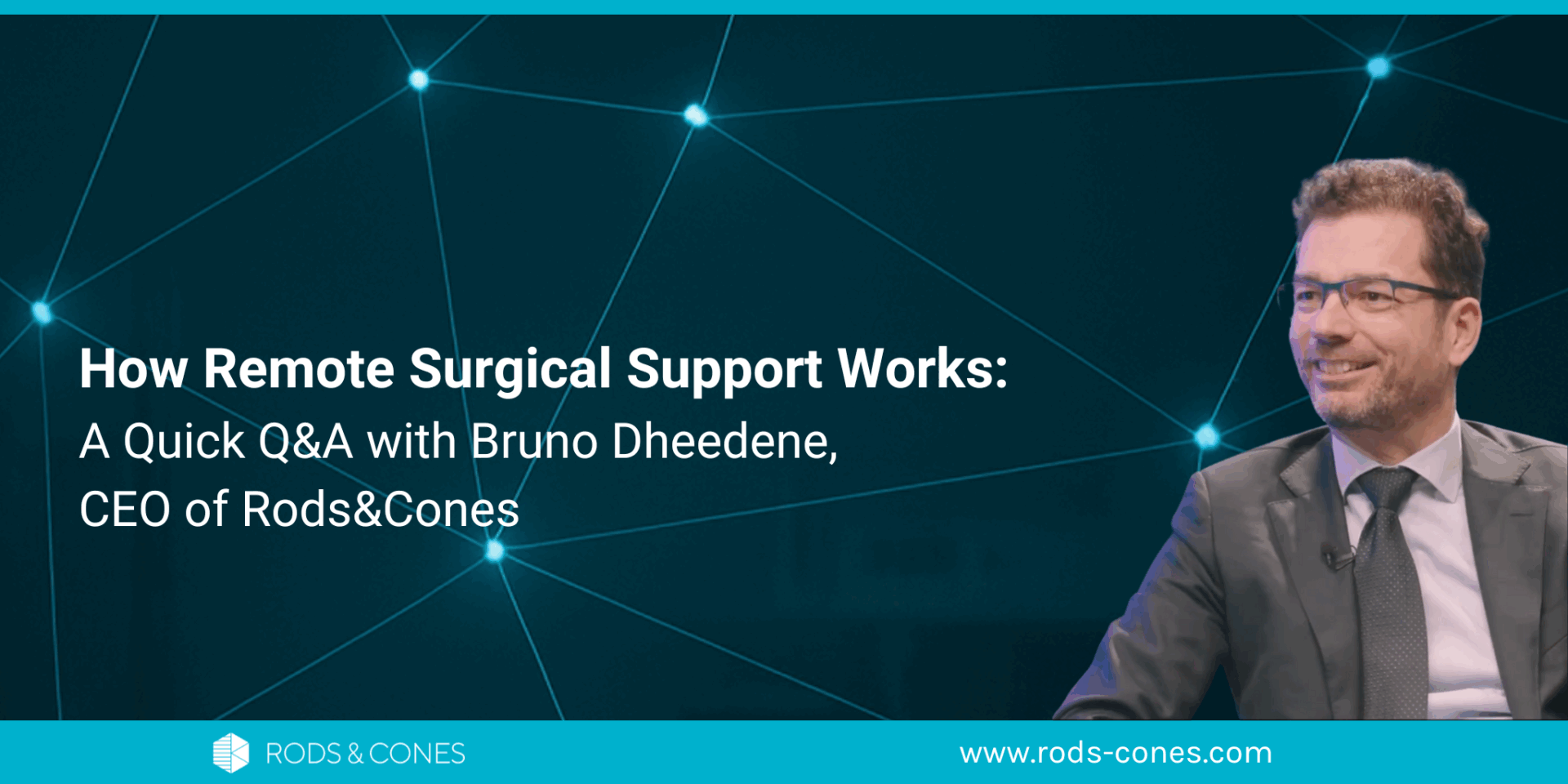Dr Corstiaan Breugem, an eminent surgeon and professor in plastic and reconstructive surgery, has delivered a cadaver course to participants in 80 countries with the support of Rod&Cones.
In what was a landmark moment – cadaver courses of this type have never before been live-streamed – surgical experts in Amsterdam connected with over 400 participants in 80 countries.
Courses like this one, which demonstrated how local nerve blocks could decrease admission times of cleft lip/palate patients after surgery, typically accommodate between 18 and 24 in-person participants.
Extending Educational Reach
“Why don’t we see if we can use the Rods&Cones glasses to involve and educate more people? It’s a great opportunity to share our knowledge.”
– Dr Corstiaan Breugem, Professor In Plastic And Reconstructive Surgery, Amsterdam UMC
With attendees flying in from around the world including Calgary, Barcelona, and Massachusetts (Harvard) the event welcomed a global audience, but nothing could prepare Dr Breugem for the unprecedented number of virtual participants.
The course examined post-operative care for cleft palate patients, exploring how to reduce morphine usage and send patients home sooner by giving them specific nerve blocks. This highly specialist area has attracted enormous interest from the medical community.
Alongside the demonstration of innovative pain relief techniques for cleft palate patients, the event broke new ground in terms of what is technically possible with remote assistance technology — where a surgeon at the table connects with external peers.
A Powerful Training Tool
“What made this different from other live-streamed events was the cadaver teaching. This has never been done before.”
– Dr Corstiaan Breugem, Professor In Plastic And Reconstructive Surgery, Amsterdam UMC
Comparable live-streamed educational events from the Amsterdam Skills Centre (ASC) have previously reached around 30 virtual attendees. This event ran into hundreds. That’s ten times as many medical professionals with new knowledge of innovative pain relief techniques for cleft palate patients. In this way, remote technology is helping to amplify knowledge sharing and democratize expertise because surgeons can attend from anywhere in the world without having to travel.
Traditionally, this training of this kind would require 10 or 12 cadavers and students would do their dissection whilst professors observed. With the setup pioneered by Dr Corstiaan Breugem, only 1 cadaver was needed at a time, and the dissection was carried out by an expert for an entire afternoon. Using a pair of smart surgical glasses, participants could see what the surgeon was seeing, and closely observe their work and its effects.
The other benefit of remote assistance technology is two-way communication. In Dr Breugem’s set-up, an assistant was on hand to field questions whilst the surgeon did the dissection, working uninterrupted.
Democratizing Medical Knowledge
What the event proved was that location is no longer a barrier to getting the best medical training. The technology enables participants to learn and interact remotely whilst getting a surgeon’s-eye-view. This is particularly beneficial for surgeons working in remote locations and low-resource countries, where expert knowledge and skills are less readily available.
The event had several attendees from low-resource countries who were provided with free access by Stichting Interplast Holland (www.interplastholland.nl) and Smile Train. This made it possible for innovative knowledge to reach a geographically-dispersed medical workforce and share best practices across borders. Ultimately, this is a model with the potential to improve patient care on a global scale.
About The Technology
Rods&Cones’ webinOR technology enables real-time broadcasting of live surgery events to large audiences of medical professionals. However, for this event – training on cadavers – the aim was to have hundreds of people attend. So how did we do it?
We connected our system to a commonly-used webinar broadcasting tool, which allowed 400 people to connect simultaneously and watch the training session online. The experience was close to real-time and extraordinary for an educational event of this magnitude.
As technology evolves and high-speed internet is available in more and more countries, we expect that in the near future, we’ll be able to connect even larger groups to real-time medical training events and experiences.
See how Rods&Cones can help surgeons share life-changing knowledge and expertise. Book a demo: https://rods-cones.com/book-demo





